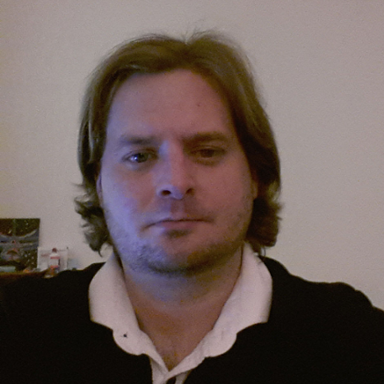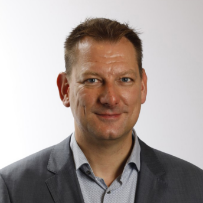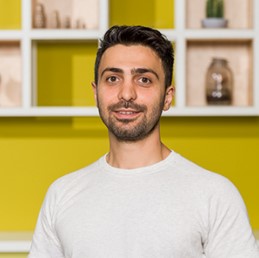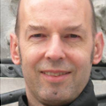What are the characteristics and consequences of internal brain organization for language?
The human brain provides a neurobiological infrastructure that allows us to acquire and process language, and that co-determines the characteristics of spoken (and sign) and written language. The internal organization of the brain and its cognitive architecture both determine and constrain the space of possibilities for human language. This internal organization can be called the Kantian brain for language. It has resulted in a language-readiness of the human brain that is found nowhere else in the animal kingdom. The big question is to characterize the Kantian brain for language.
Currently BQ2 is in the process of building links between the various sub-projects. Each sub-project has had the opportunity to present their most recent work/ideas/questions of interest, and BQ2 is now in a phase of bridging the sub-projects to try to define new research questions based on collaborations between sub-themes. To foster such collaborations, meetings are planned where pairings of sub-projects will present ideas that culminate from joint brainstorm sessions about potential links between one another’s work and expertise. In the long run the hope is that such combinations of expertise and perspectives will lead to innovative and cutting-edge projects that address the overarching goal of how the human brain supports language processing.
People involved
Steering group

Prof. dr. Peter Hagoort
Programme Director
PI / Coordinator BQ2
Profile page

Dr. Ashley Lewis
Coordinating Postdoc BQ2
Profile page
Team members

Prof. dr. Christian Beckmann
PI
Profile page

Prof. dr. Simon Fisher
PI
Profile page

Prof. dr. Elia Formisano
PI
Profile page

Dr. Clyde Francks
PI
Profile page

Prof. dr. Roy Kessels
PI
Profile page

Prof. dr. Floris de Lange
PI
Profile page

Dr. Sourena Soheili-Nezhad
Postdoc
Profile page

Dr. Vitória Piai
PI
Tenure track researcher
Profile page

Prof. dr. Nick Ramsey
PI
Profile page

Prof. dr. Ardi Roelofs
PI
Profile page

Dr. Rogier Mars
PI
Profile page

Dr. Jan-Mathijs Schoffelen
PI
Profile page

Prof. dr. Ivan Toni
PI / Coordinator BQ3
Profile page
Dr. Marius Braunsdorf
Postdoc
PhD Candidates

Guilherme Blazquez-Freches
PhD Candidate
Profile page

João Ferreira
PhD Candidate
Profile page
Collaborators
Dr. Xiangzhen Kong
Dr. Zhiqiang Sha
Dr. Tineke Snijders
Dr. Maggie Wong
Dr. Daniel Sharoh
Dr. Joanna Sierpowska
Alumni
Nikki Janssen – PhD
Daniel Sharoh – PhD
Ileana Camerino -PhD
Research Highlight (2022)
Highlight 1
Low frequency neural oscillations for feedback signalling during sentence comprehension
Team members: Ashley Lewis, Floris de Lange, and Peter Hagoort
The purpose of this project is to develop linguistic paradigms in which the relative contributions of feedforward and feedback information streams can be manipulated in order to study the associated neural architecture. This magnetoencephalography (MEG) study used Dutch sentences that provided either strong contextual constraint towards a particular target word (TW), or were less constraining and allowed multiple TWs as a potential sentence completion. In half of the experimental blocks the TW in the sentence was visually degraded (this was made explicit to participants at the beginning of each block), thus encouraging readers to rely more on feedback information provided by the sentence context to fill in the missing feedforward information.
Visual degradedness was achieved through low-pass spatial filtering, somewhat akin to noise-vocoding with speech stimuli. Based on previous literature we hypothesized that alpha oscillations (8-12 Hz) prior to the onset of the TW would provide an index of feedback signalling in the MEG when participants try to anticipate which TW will appear in the input. Beamforming was used to obtain time-resolved estimates of activity at 15684 points on a cortical sheet constructed from each participant’s individual anatomical MRI, and pointwise connectivity in the alpha band was computed using imaginary coherence. Dimensionality of these estimates was reduced to 374 cortical parcels based on a modified version of the Conte69 atlas, and cluster-based permutation statistics were used to compare connectivity estimates between conditions of interest.
Figure 1 shows the most relevant result, with increased connectivity (p = 0.008) between left frontal and left temporal cortical regions (i.e., perisylvian regions often implicated in sentence comprehension) in blocks where the TW was visually degraded, prior to the onset of the TW. This increased alpha connectivity when readers anticipate a need to use feedforward information to predict a visually degraded TW is consistent with our hypothesis that feedforward signalling in the brain’s language network is carried out via low frequency neural oscillations. Follow-up analyses will probe the direction of information transfer in these perisylvian language networks using Granger causality.

This project directly addresses a core question of the BQ2: the role of low and high frequency neural oscillations in feedback and feedforward signalling in the brain to support language processing. In doing so, it brings together experts from psycholinguistics/cognitive neuroscience of language, prediction and attention, and cutting-edge methods for the analysis of neural oscillations.

